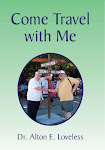
Puntarenas not my “cup of tea”
After two days at sea. We arrived at Puntarenas, Costa Rica, which in Spanish means sandy point, that stretches about the two-thirds across the country on the Pacific side of and about 75 miles from San Jose the capital of the country.
Our friends agreed to hire a local to drive us across the countryside which contains a little bit of everything. Banana trees, mango, papaya, cocoa, breadfruit, and beautiful flowering trees. It is a country that is the home of a much flora and fauna. It is gorgeously filled with rain forests and many rivers flowing aimlessly everywhere.
We told our driver we wanted a taste of his country and gave him the freedom to choose for us where he thought we would like. He took us down through winding roads filled with various types of homes, and even by his own cottage, until we arrived at a rain forest with a lodge and an old chapel where we stopped, held hands, and prayed. That area was called Iglesia Villa Lapas and was far off the beaten path, but had a hotel and nice restaurant. One noticed immediately the abundance of iguanas, colorful birds and even orchid growing of the limbs of the large trees.
Afterwards we drove through the town of Esparza (one of the country's earliest Spanish settlements founded in 1554) which still is a beautiful small town today.
For a rest stop, we visited a farmers market which had a large variety of fruit, nuts, melons and other items native to the area. They were tasteful and beautifully arrayed to persuade one to buy. We did!
One does not find many beautiful homes in this region, because the economy is somewhat bad here and most of the income comes from tourism which is just now beginning to grow. However, except for a few coffee plantations inland, there is not much to offer to see unless you like rain forest, etc.
On our return we were taken back on a new highway bordering the coast line to a place of local vendors since it was a Sunday and most of the regular shops were closed. After a number of gifts and souvenirs were purchased we headed back to the ship.
At 4:30 a scheduled inter-denominational service had been previously scheduled where I spoke to many who came to sing and worship from many countries and denominational preferences. I enjoyed speaking to this diverse group as I shared a message entitled, “The Sweets words ever spoken-‘He is not here He is Risen’ ”, --on the beautiful resurrection of our Lord Jesus Christ.
Puntarenas is the largest province in Costa Rica and Port Caldera, where we docked, is located south of the city and has become the most important port of call for some of the major cruise lines. Puntarenas sits on a long, narrow peninsula in the Gulf of Nicoya and is a nice port. Some 100,000 live in the city and close towns.
While I enjoyed the drive through the area and saw the needs of the country, it was not a tour spot I would visit just as a tourist again. I felt a deep feeling for the needs of the country.
If there be among you a poor man of one of thy brethren within any of thy gates in thy land which the LORD thy God giveth thee, thou shalt not harden thine heart, nor shut thine hand from thy poor brother: -- Deuteronomy 15:7
Dr. Alton Loveless is the former CEO/President of Randall House Publications, Nashville, Tn., He is a freelance writer and has written for assorted publications printed both nationally and internationally. To see photos and read other stories click on http://altonloveless.blogspot.com/





